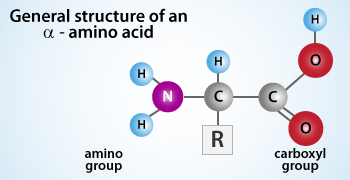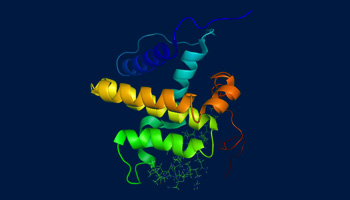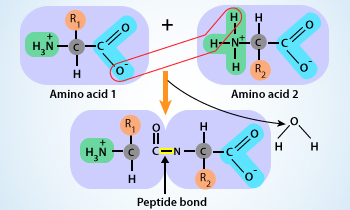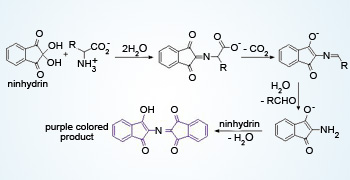 Being the only variant, the side chain determines the chemical properties of an amino acid.
Being the only variant, the side chain determines the chemical properties of an amino acid.
Proteins are the large biopolymers consisting of one or more chains of L–α–amino acids.
Each amino acid has a basic structure in which a central carbon atom (alpha carbon) is attached to four different groups, i.e., a hydrogen atom, an amino group (–NH2), a carboxylic group (–COOH) and a side chain 'R' (Glycine is an exception in which side chain is composed of a hydrogen atom.).

Structure of proteins:
Cells utilize only 20 amino acids to synthesize proteins. The information for the synthesis of proteins is stored in the nucleus in the form of genes. These genes dictate the amino acid sequence in a polypeptide chain. Amino acids in a polypeptide chain are bonded together by peptide bonds.
 The –CO–NH– (amide) linkage that forms between the adjacent amino acids is known as peptide linkage or peptide bond.
The –CO–NH– (amide) linkage that forms between the adjacent amino acids is known as peptide linkage or peptide bond.
Chemically, proteins are by far the most complex molecules known. They have four levels of structural organization:
- Primary Structure: It includes the linear arrangement of amino acids in a protein resulted from peptide linkages.
- Secondary structure: It involves the folding and coiling of polypeptide chains due to hydrogen bonds between peptide groups.
- Tertiary structure: Further folding of polypeptide chains, because of tertiary interactions, such as hydrogen bonds, disulphide bonds, and salt bridges, is responsible for the three dimensional structure of proteins.
- Quaternary structure: The multiple polypeptide subunits bind together to form a single, larger protein.

Identification of proteins:
A dye Ninhydrin is used for the identification of proteins. Except proline and hydroxyproline, all of the amino acids present in a protein react with the dye to produce a purple anion.
Significance of proteins:
Proteins are present in each and every cell and are essential for the growth and development of living beings. Proteins serve many functions inside a cell. They are one of the main constituents of plasma membrane and regulate the movement of molecules across it. Microtubules provide structural stability to the cell, hemoglobin is a globular protein that transports blood throughout the body. Enzymes are proteins that catalyze all the metabolic processes. Hormones regulate many body functions, for instance, insulin maintains the blood sugar level. Skin is made up of a waterproof protein 'keratin'. Antibodies are glycoproteins that identify and kill the foreign pathogens and protect the body from their infections. In a nutshell, we can say that proteins are one of the most sophisticated biomolecules that perform myriad functions inside the body.